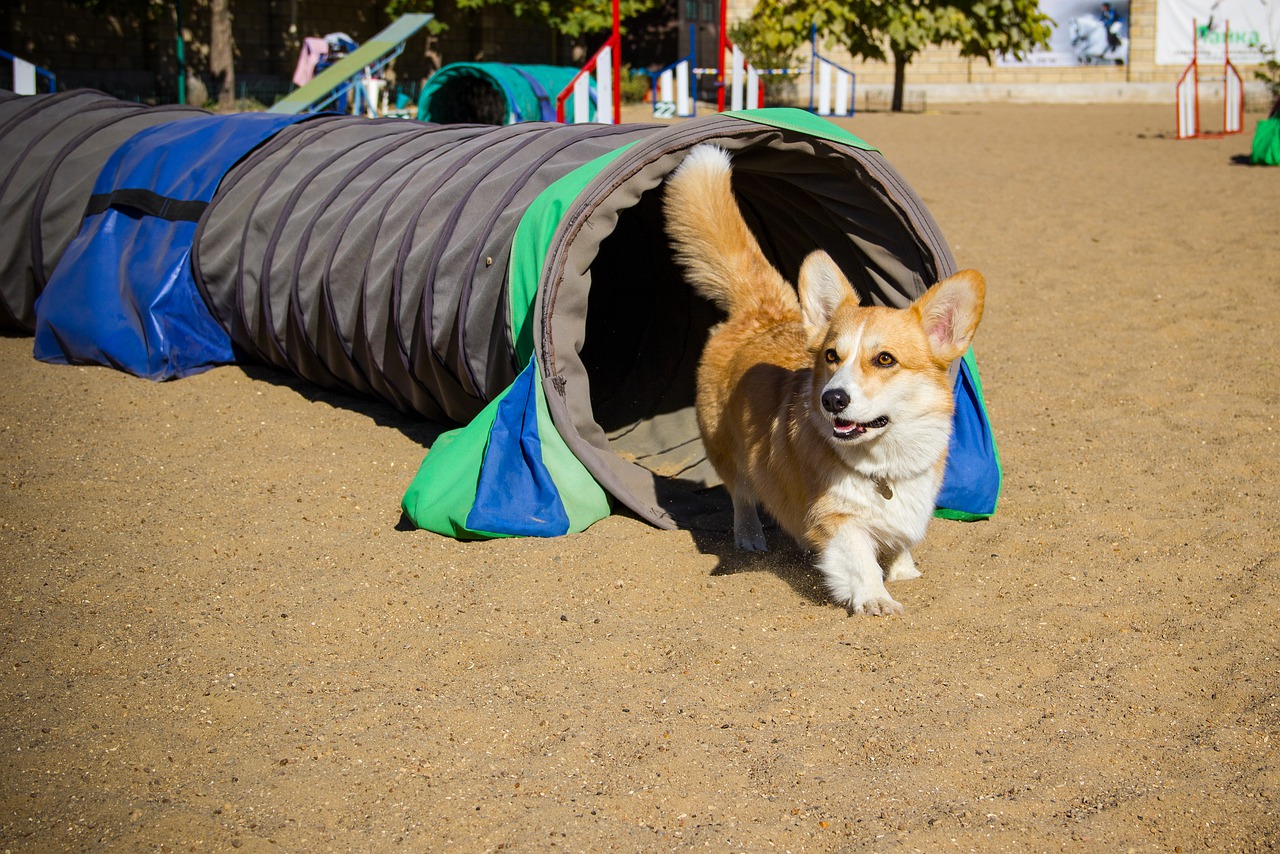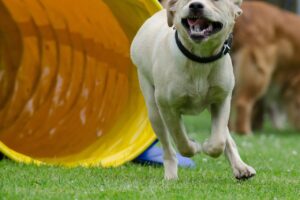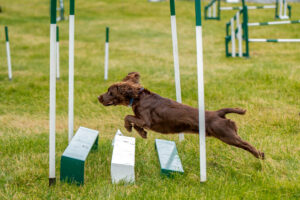
Revisiting Basic Puppy Training for Adult Agility Dogs
Dog agility is an exhilarating sport that showcases the bond between handler and dog, testing their speed, coordination, and communication. While many dogs excel in agility, those who continue to perform at the highest levels often have one thing in common: a strong foundation in basic training. Revisiting these foundational skills, even as your dog matures, is crucial for success in the agility ring.
1. Reinforcing Core Obedience Skills
At the heart of agility is obedience. Whether it’s a perfect sit-stay at the start line, a reliable recall, or sharp directional cues, these commands are non-negotiable for a successful run. Over time, even the most well-trained dogs can become lax in their obedience, especially if their handlers start to overlook these basics in favor of advanced agility drills.
Revisiting core obedience skills ensures that your dog remains responsive and focused. Regularly practicing sit, stay, come, and heel will help maintain your dog’s discipline, which directly translates to better performance on the agility course. A dog that is confident in these basics is less likely to make costly mistakes during a run, such as breaking a stay or missing a contact point.
2. Building Trust and Communication
Agility is a team sport that requires seamless communication between dog and handler. Revisiting basic training is an opportunity to strengthen the trust and communication that are vital for navigating the complexities of an agility course. When you reinforce simple commands and exercises, your dog learns to pay close attention to your cues, which can be crucial in high-pressure situations during competitions.
This renewed focus on communication also helps in fine-tuning your dog’s responsiveness to subtle signals. For example, a dog that has been well-conditioned through basic training is more likely to accurately interpret your body language and verbal cues, allowing for smoother transitions between obstacles.
3. Addressing and Correcting Bad Habits
As dogs mature, they can develop habits that might not have been present during their initial training. These could include anything from a delayed response to commands, hesitation on certain obstacles, or even a tendency to anticipate commands. Revisiting basic training provides an opportunity to identify and correct these bad habits before they become ingrained and affect your dog’s agility performance.
Regularly practicing fundamental skills allows you to maintain a clear standard of behavior, making it easier to address issues as they arise. By reinforcing the basics, you create a structured environment where your dog knows exactly what is expected, reducing the likelihood of misbehavior or confusion during agility runs.
4. Enhancing Physical Conditioning
Basic training exercises are not just about obedience; they also play a crucial role in your dog’s physical conditioning. Drills like sit-stays, recalls, and controlled heeling all require your dog to engage different muscle groups, contributing to overall strength, balance, and coordination—key components in agility.
By incorporating these exercises into your dog’s routine, you help to build and maintain the physical fitness needed to excel in agility. A well-conditioned dog is less prone to injuries and more capable of handling the physical demands of the sport, from sharp turns to fast sprints.
5. Strengthening the Dog-Handler Bond
The relationship between you and your dog is the cornerstone of successful agility. Revisiting basic training is a way to continually nurture and strengthen this bond. These training sessions offer valuable one-on-one time, fostering a deeper connection and mutual understanding.
As your dog matures, this bond becomes even more important. A strong relationship built on trust, respect, and clear communication will not only improve your dog’s performance but also make the agility experience more enjoyable for both of you.
6. Adapting to Your Dog’s Changing Needs
As dogs age, their needs and abilities can change. Revisiting basic training allows you to assess your dog’s current physical and mental state, adapting your training methods to suit their evolving needs. This might mean adjusting the intensity of training sessions, focusing more on low-impact exercises, or even modifying certain commands to accommodate any physical limitations.
By staying attuned to your dog’s condition through basic training, you can ensure that they continue to enjoy agility well into their senior years, performing at their best while staying healthy and happy.
Conclusion
Revisiting basic puppy training as your dog matures is not just about reinforcing obedience—it’s about ensuring long-term success and enjoyment in the sport of agility. Whether you’re addressing bad habits, enhancing communication, or simply keeping your dog’s skills sharp, these foundational exercises are essential to your dog’s agility journey. By investing time in the basics, you’re setting the stage for a stronger, more capable, and more connected agility team.



